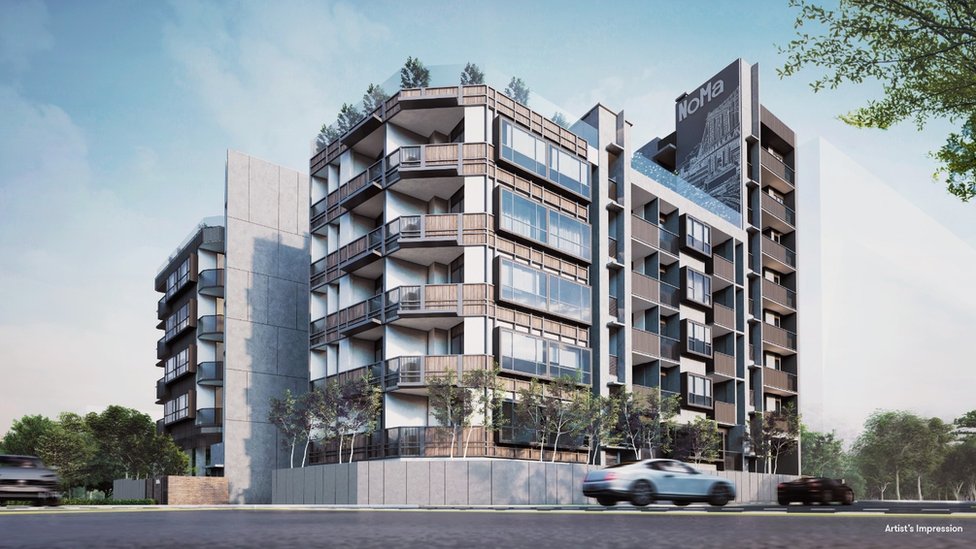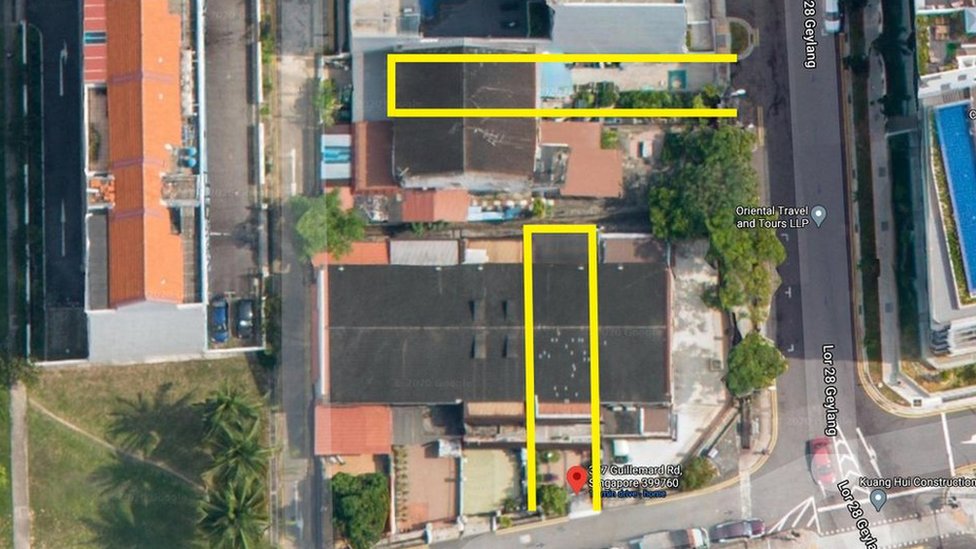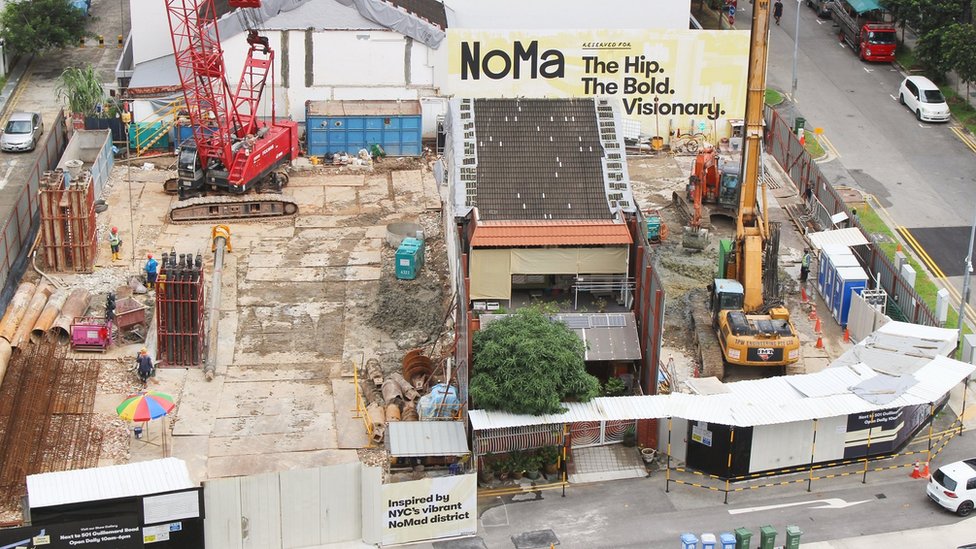Singapore has over the years engaged in land reclamation - expanding its landmass by more than 20% since its independence in 1965, using imported sand from neighbouring countries - but there is still a serious lack of space.
What's more, most of the developments in Singapore are built on leasehold land which is state-owned, meaning that when the lease expires, ownership of the land goes back to the government.
Properties built on freehold land, however, belong to the home owners indefinitely - and, as a result, can be sold for a much higher price.
In this case, property developer the Macly Group plans to turn this piece of land into The NoMa condominium, 50 units spread across three separate blocks. Here, a four-bedroom unit will set you back at least $1.88m (£1m; $1.36m).
According to a Straits Times report, the Macly Group had to acquire seven houses and tear them down to redevelop the 13,000 sq ft plot.
The Macly Group declined to comment on how many houses were acquired and at what cost. But media reports say it managed to secure five of them for a sum of around S$20.55m.
The final two refused to move - one facing the main street and another facing a side street - upsetting the developer's original plans.
"[We] could not implement the original designs as a result," a spokesperson from Macly Group told the BBC. "We had to change the design drastically to offer separate accesses for privacy."
And so, these holdouts will become the city's latest nail houses - or dingzihu in Chinese - a home where the owner refuses to accept money from a property developer for its demolition. They often end up surrounded by rubble, or with developers just going ahead and building around them.




0 تعليقات